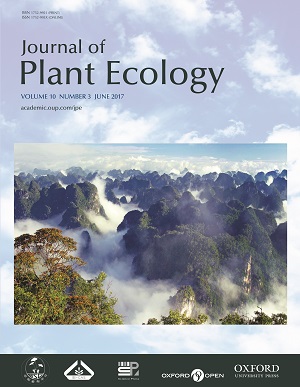Current Issue
-
 Volume 10 Issue 3
Volume 10 Issue 3
In Nonggang National Natural Reserve, China, Guo et al. established a 15 ha long-term monitoring forest plot, to examine species–habitat associations in different habitat types at young and mature life stages. A close-up shot of this unique type of karst seasonal rain forest ecosystem in one flowery morning. Photo taken by Shengyuan Liu.
IF: 3.9
CiteScore: 5.7
CiteScore: 5.7
Editors-in-Chief
Yuanhe Yang
Bernhard Schmid
Yuanhe Yang
Bernhard Schmid
CN 10-1172/Q
ISSN 1752-9921(print)
ISSN 1752-993X(online)
ISSN 1752-9921(print)
ISSN 1752-993X(online)







